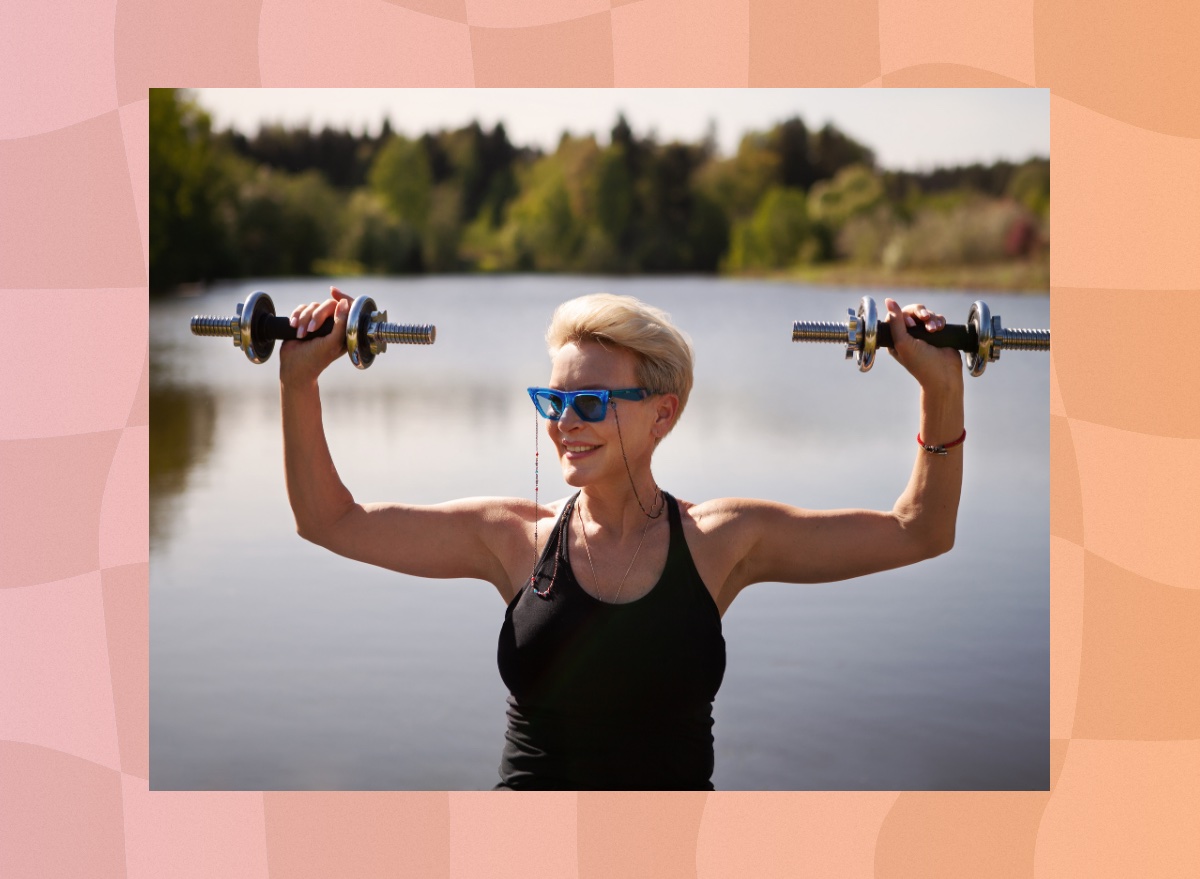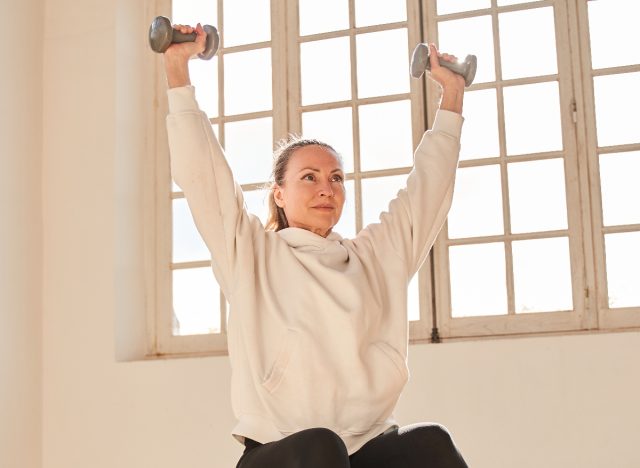5 Best Strength-Building Tips for Women Over 60

Who couldn't benefit from a few solid workout tips? Incorporating the right tweaks and improvements to your strength-training routine is an extraordinary way to maximize your workout results. We're here to share the best strength-building tips for women over 60, and they can totally improve your overall well-being. Specifically, the right tips can help you avoid common injuries that come with aging and perhaps suggest a better workout style altogether.
When it comes to strength training for people over 60, new ideas may boost your ability to build and enhance muscle mass, strength, bone density, flexibility, mobility, and even weight management.
"Over time, strength training helps you displace the fat on your arms and legs with dense, firm muscle. More muscle means you can lift more weight and burn even more energy, which helps lead to lower body fat. The more skeletal mass you have, the better for your body," explains Roz Frydberg, group fitness trainer and ARORA lead/active aging specialist at Life Time Woodbridge. "With the ability to control your body through a range of motion you are engaging the correct muscle groups and can save yourself from falling."
Now, let's learn five strength-building tips a fitness pro has to share.
In This Article:
- Learn How To Use Your Muscles Correctly
- Learn the Basic Functional Strength-Training Moves
- Start Slow
- Work With Equipment or Just Your Body Weight
- Ensure You're Following a Proper Training Schedule
Learn How To Use Your Muscles Correctly

Using your muscles correctly and maintaining proper form during workouts is essential in the strength-building process. Correctly engaging your muscles ensures you're using the right muscles, which decreases your chances of suffering from an injury and boosts the effectiveness of your sweat session.
Learn the Basic Functional Strength-Training Moves

If you don't regularly perform functional strength training, there's no better time than the present to get started! Functional strength training is crucial to perform daily activities and tasks, which in turn can improve your overall quality of life. Frydberg encourages you to learn the basic functional strength moves: squat, lunge, press, pull, and push.
Start Slow

You may have heard the saying before that "slow and steady wins the race," and there's truth to it!
"Start off slowly; do not speed through the movements, and let's put the mind to the muscle," encourages Frydberg. Ask: Why am I doing this move? How should I feel? Where should I feel it? How do I position my body to get the most from the movement?"
Work With Equipment or Just Your Body Weight

You don't need fancy equipment or a pricey gym membership to get fit and achieve your desired strength results. For a productive workout, you can train with just your body weight or portable tools like resistance bands.
"Resistance training helps bone density as you [use] your own body resistance with the help of a band or a TRX and weight machines, medicine balls, sandbags, [or] free weights," explains Frydberg.
Ensure You're Following a Proper Training Schedule

Frydberg recommends strength training three times a week for three weeks to start seeing noticeable improvements in your range of motion, energy levels, and strength. In addition, keep your workouts varied so you're not overtraining the same muscles. And lastly, on the days you're not strength training, stay active! Whether you head out for a walk, jog, bike ride, or swim, you'll be keeping your body limber and ready to take on your next strength-training session.









